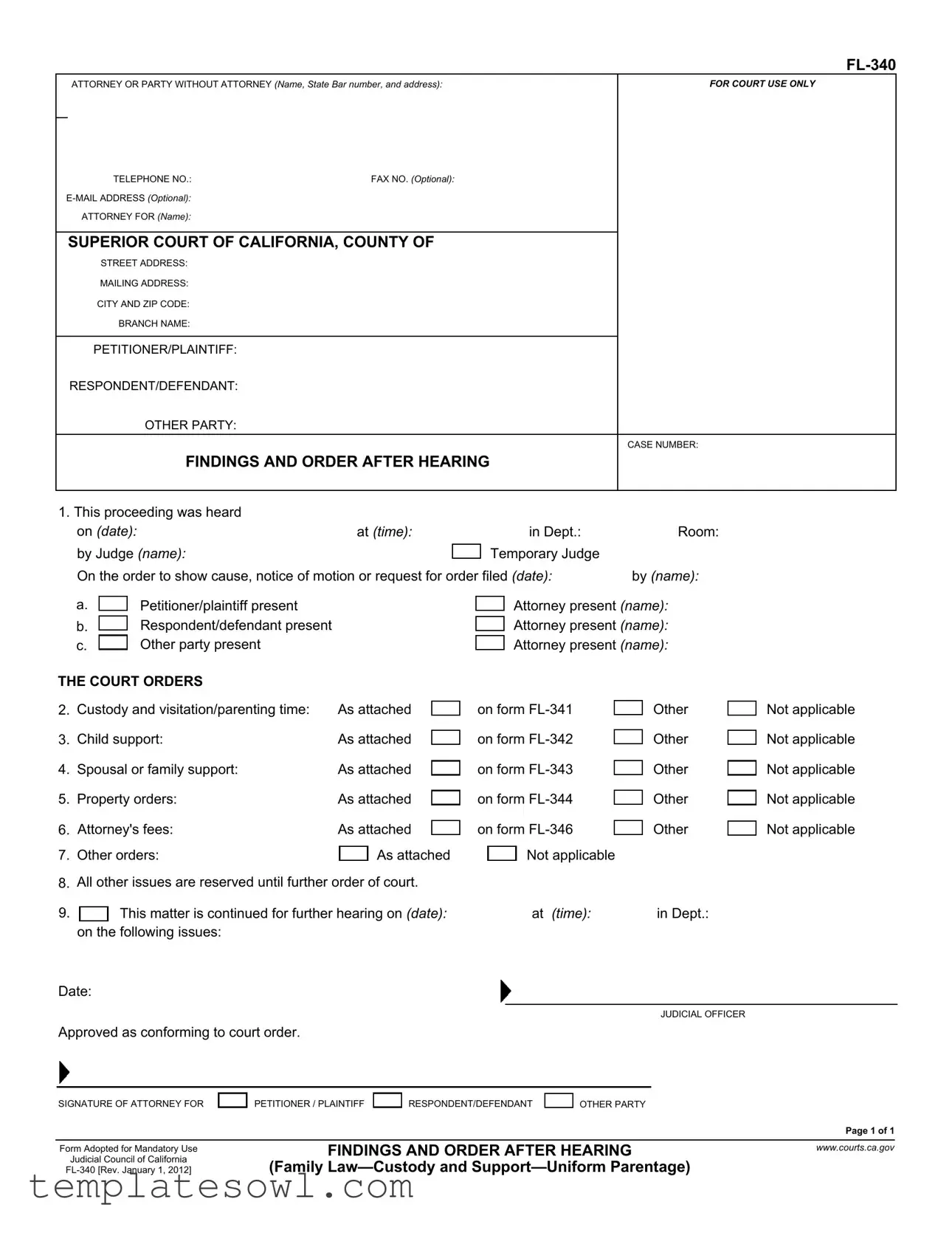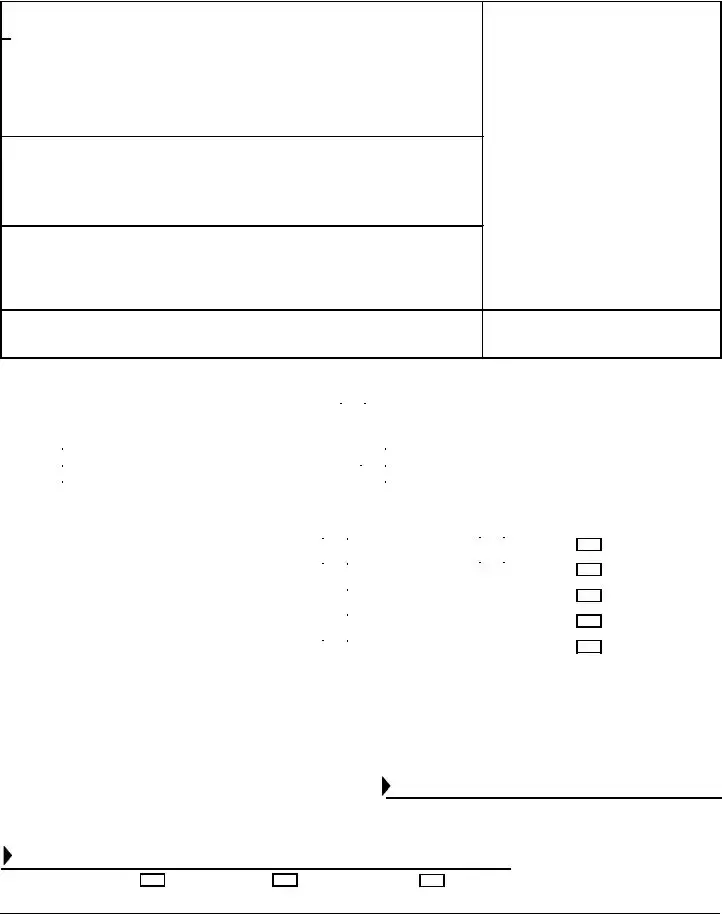What is the purpose of the FL-340 form?
The FL-340 form, titled "Findings and Order After Hearing," serves as a crucial document used in family law proceedings in California. It summarizes the outcomes of hearings related to custody, visitation, child support, spousal support, property orders, and attorney’s fees. This form is important for parties involved in a case to understand what has been decided by the court after the hearing.
Who uses the FL-340 form?
This form is utilized by attorneys or self-representing individuals involved in family law cases, such as divorce, custody disputes, or support issues. It is prepared after a hearing to reflect the court’s orders and findings. Both the petitioner/plaintiff and respondent/defendant can take part in completing this form as it requires information pertaining to all parties involved in the case.
What information is required to complete the FL-340 form?
To complete the FL-340 form, specific details must be included, such as the names and addresses of the parties, the case number, and the date and time of the hearing. Additionally, it's necessary to document the court orders regarding custody, visitation, child support, spousal support, property orders, and any other relevant issues discussed during the hearing.
What happens if a party does not agree with the FL-340 findings?
If a party disagrees with the findings and orders reflected in the FL-340 form, they may have options to contest the orders. It is advisable to seek legal counsel for guidance. Typically, a party might file a motion for reconsideration or appeal the decision, but the specific steps depend on the circumstances of the case and any relevant deadlines.
Is the FL-340 form a permanent record?
Yes, the FL-340 form becomes part of the court record once it has been filed. The orders outlined in this document are typically binding, unless modified through a subsequent court order. Therefore, it is essential for all parties to fully understand and agree with the contents of the form before it is submitted to the court.
How is the FL-340 form submitted to the court?
The completed FL-340 form can be submitted to the court in person or electronically, depending on the local court's rules. After the hearing, the party responsible for completing the form should ensure that it is filed with the court clerk promptly. Additionally, copies may need to be provided to all parties involved in the case for their records.

